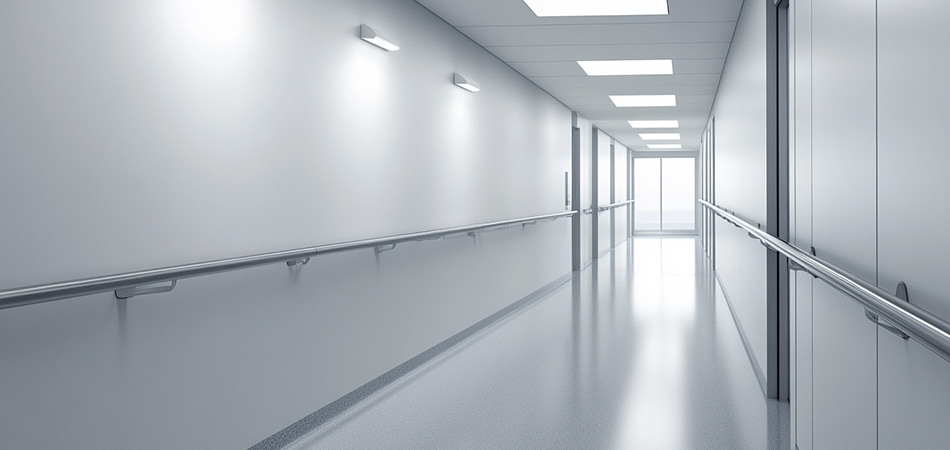 Service Hotline:13510328459
Service Hotline:13510328459
 205-206, 2nd Floor, Building 2, Xiazao Village Industrial Zone, Gaofeng Community, Dalang Street, Longhua District, Shenzhen City
205-206, 2nd Floor, Building 2, Xiazao Village Industrial Zone, Gaofeng Community, Dalang Street, Longhua District, Shenzhen City
 Service Hotline:13510328459
Service Hotline:13510328459
 205-206, 2nd Floor, Building 2, Xiazao Village Industrial Zone, Gaofeng Community, Dalang Street, Longhua District, Shenzhen City
205-206, 2nd Floor, Building 2, Xiazao Village Industrial Zone, Gaofeng Community, Dalang Street, Longhua District, Shenzhen City
Time:2025-09-03 Preview:
Ensuring the safety and accessibility of nursing homes is a top priority for caregivers and facility managers alike. One crucial component in achieving this goal is the installation of accessibility handrails. These handrails provide essential support and stability for elderly residents, helping to prevent falls and improve overall mobility.
In this article, we will explore the importance of nursing home accessibility rails, the different types available, and how they contribute to a safer living environment for seniors.
Accessibility handrails play a vital role in the daily lives of nursing home residents. As individuals age, their balance and strength can diminish, making them more prone to slips and falls. Handrails provide the necessary support to help residents move safely throughout the facility.
Nursing home safety is a critical concern, and handrails are a simple yet effective way to enhance it. By offering additional stability, handrails reduce the risk of accidents, which are unfortunately common in senior living environments. This preventative measure not only protects residents but also provides peace of mind for their families and caregivers.
Handrails are not just about safety; they also promote independence among nursing home residents. With the support of accessibility handrails, seniors can move more freely and confidently, maintaining a sense of autonomy and dignity. This can greatly improve their quality of life and overall well-being.

There are various types of accessibility handrails available, each designed to meet specific needs and preferences. Understanding the differences can help in selecting the right handrails for a nursing home facility.
Wall-mounted handrails are a popular choice for nursing homes. These rails are installed directly onto the walls of corridors and rooms, providing a sturdy support system for residents. They are typically made of durable materials such as stainless steel or aluminum, ensuring longevity and strength.
Floor-mounted handrails are anchored directly into the floor, offering robust support for residents who require additional stability. These handrails are often used in areas where wall-mounted options are not feasible, such as open spaces or hallways with wide walkways.
Adjustable handrails are a versatile option for nursing homes. They can be customized to suit the specific height and grip preferences of individual residents. This adaptability makes them an excellent choice for facilities with diverse resident needs.
Portable handrails offer flexibility and convenience. These rails can be moved and positioned as needed, providing temporary support in various locations. They are particularly useful for activities that require mobility, such as physical therapy sessions or group exercises.
When installing accessibility handrails in a nursing home, several factors need to be taken into account to ensure their effectiveness and safety.
The placement of handrails is crucial. They should be installed at a height that is comfortable and accessible for residents, typically between 34 and 38 inches from the floor. Handrails should also be continuous along hallways and in key areas such as bathrooms and staircases.
Choosing the right material for handrails is important for both durability and hygiene. Stainless steel and aluminum are popular choices due to their strength and resistance to corrosion. Additionally, these materials are easy to clean, which is essential in maintaining a sanitary environment.
It's essential to ensure that all handrails meet local and national safety regulations. Compliance with standards, such as those outlined by the Americans with Disabilities Act (ADA), guarantees that handrails are safe and accessible for all residents.
Regular maintenance of handrails is necessary to ensure their continued effectiveness. Inspections should be conducted to check for any signs of wear or damage, and repairs should be made promptly to prevent accidents.
The installation of accessibility handrails in nursing homes offers numerous benefits for both residents and caregivers.
As mentioned earlier, handrails significantly reduce the risk of falls and injuries among residents. This improvement in safety can lead to fewer emergency incidents and a more secure living environment.
Accessibility handrails contribute to an increase in confidence and morale among residents. Knowing they have the support they need to move around safely can boost their spirits and encourage more active participation in daily activities.
Handrails can also provide support for caregivers, making it easier for them to assist residents in moving from one place to another. This can reduce the physical strain on caregivers and allow them to focus on providing quality care.
Investing in accessibility handrails is a cost-effective solution for nursing homes. By preventing falls and injuries, facilities can avoid costly medical expenses and potential legal issues. The long-term benefits far outweigh the initial installation costs.
Nursing home accessibility rails are a critical component in creating a safe and supportive environment for elderly residents. By understanding the importance of handrails, the types available, and the considerations for installation, nursing home managers can make informed decisions that enhance safety and quality of life for their residents.
Implementing these solutions not only protects residents but also supports caregivers and provides peace of mind for families. Accessibility handrails are a simple yet powerful tool in the ongoing effort to improve nursing home safety and accessibility.
